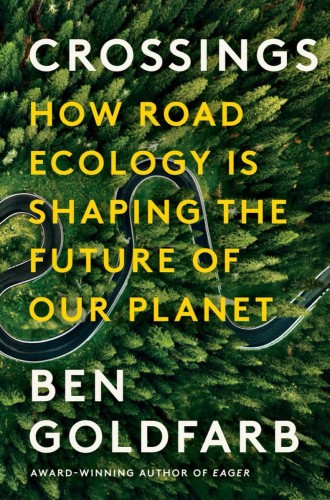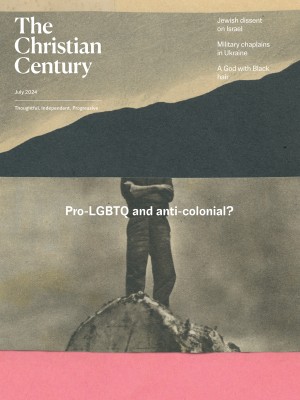How roads hurt animals
Ben Goldfarb’s book on road ecology has expanded my understanding of what makes a livable city—and world.

Crossings
How Road Ecology Is Shaping the Future of Our Planet
As an urban planner, I seek to make my city more livable for people. This includes work to mitigate some of the adverse effects of cars by making streets safer for walking and cycling, reducing the amount of land consumed by parking spaces, and decreasing the carbon emissions of the transportation sector. I have to admit, though, that I’ve spent almost no time in my job thinking about the impacts of cars on animals.
That is, until I read journalist Ben Goldfarb’s Crossings and learned about the science of road ecology, defined loosely as the study of how “life changes for plants and animals with a road and traffic nearby.” I knew that 40,000 Americans are killed each year in car crashes, but I learned that 1 million vertebrate animals are struck by cars each day in this country.
Read our latest issue or browse back issues.
Goldfarb shares compelling road stories of animals across the country and around the world. Mule deer in Wyoming have a 300-mile migration in and near the Rocky Mountains, but their journey hits a moving fence at Interstate 80. A small population of mountain lions is practically trapped in the Santa Monica Mountains near Los Angeles, surrounded by highways and resorting to inbreeding. Turtles in Florida attempting to cross a highway that severed their wetland have little hope of making it alive. Salmon in the Northwest migrating to their spawning grounds are blocked by culverts under roads that get clogged by branches and debris. Add to this wallabies in Australia, toads in England, snakes in Costa Rica, anteaters in Brazil, and it’s easy to see the destructive force of roads on wildlife. Animals lose their ability to move freely, disrupted by the roads built so humans can move freely.
Crossings profiles the road ecologists who study these problems and create solutions to fix them. This calling requires “an act of interspecies imagination, [in] a field whose radical premise asserted that it was possible to perceive our built world through nonhuman eyes.” Scientists and engineers engage in experimentation—trial and error—to design infrastructure that wildlife will accept and use. Today, underpasses below I-80 guide mule deer safely to the other side. A major overpass above LA’s US Highway 101 liberates mountain lions from their road prison. A tunnel below the highway permits turtles to access both sides of their wetland. Enlarged culverts and new bridges free salmon to swim upstream to reproduce, their last act of life.
Goldfarb shares insightful interviews with numerous members of road ecology’s “human ecosystem.” These are the conservationists, activists, scientists, engineers, contractors, and politicians who collaborate to study the problems, devise solutions, push for action, allocate funding, and construct wildlife crossings. He demonstrates the myriad factors motivating road ecology’s proponents. Transportation officials seek to reduce the costs associated with wildlife crashes—approximately $9,100 for one deer collision and $11 billion per year for all animal crashes in America. Northwest tribal members fought for improved culverts to restore the salmon migrations from which they take sustenance and identity. Animal carers in Tasmania nurse car-struck marsupials back to health, hoping they will be able to survive in the wild. Frog shuttlers carry amphibians across the highway in buckets. Goldfarb quotes Robin Wall Kimmerer, who believes these acts may help us relieve our “species loneliness—estrangement from the rest of Creation.”
Goldfarb is clear-eyed about the challenges facing the road ecology movement and “the global future of transportation, which will almost surely feature more cars, not fewer” on a rapidly expanding network of roads. He notes that these new roads, mostly in developing countries, can be built with road ecology’s lessons in mind, which is easier than retrofitting existing highways, as has generally been the case in the United States. For instance, a highway through a tiger reserve in India was built elevated on concrete pillars for animals to roam freely beneath. Road ecologists in Brazil, however, expressed ambivalence and noted that building wildlife crossings may greenwash a new highway that is bound to deforest the Amazon and destroy ecosystems.
Nevertheless, Goldfarb sees the task of making roads lie lighter on the land as a historically large public works project that is part of what “geologian” and historian Thomas Berry described as humanity’s Great Work: “moving the human project from its devastating exploitation to a benign presence.”
Crossings has expanded my understanding of what makes a city—and a world—livable. “Our own lives have been captured by pavement,” Goldfarb writes. We built a world for cars, and now it will take all our compassion, dedication, and ingenuity to see and make a world beyond the pavement. This is work worth doing. True human freedom is not found speeding down the open road but in moving through this world in ways that respect all living things.





